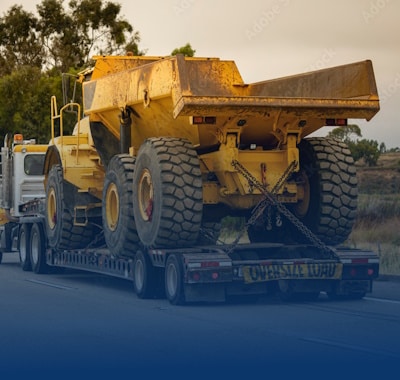Oversize Weekend Travel Restrictions in the Southeast
Freedom Heavy Haul can offer expedited Pickup and Delivery for any size shipment anywhere in the USA. Contact us today for No Hassle, No Pressure Pricing.
This guide explains how regional rules affect every oversize load during holiday periods. You’ll get clear, practical advice to plan moves, secure a permit, and avoid last-minute delays.
Many states impose curfews that start at noon or sunset and end at sunrise. Examples include Monday closures and multi-day blackout windows around Memorial Day and Labor Day.
Know when travel allowed windows reopen so your heavy haul team can stage equipment and set routes. Some states allow movement only with prior-issued permits, and thresholds for width, length, height, and weight trigger different regulations.
This short introduction previews what follows: state-by-state rules, common patterns like noon cutoffs and sunrise resumptions, and tips to time loads for minimal downtime. Use the permit guidance to keep loads moving and stay compliant with varied conditions across nearby states.
Why weekend and holiday OSOW rules matter for heavy haul in the Southeast
Holiday windows can turn a simple move into a scheduling puzzle. When public holidays compress allowed hours, planners must lock in the right permit early. That prevents multi-day layups and keeps a load from getting stranded by a noon cutoff or sunset closure.
Permitting is where compliance and timing meet. Size and weight thresholds decide whether a vehicle needs special permits, escorts, or daytime-only movement. Each state may also add route-specific conditions that supersede general guidance.
“Always confirm permit details and build staging time — it saves days and expense.”
- Plan routes with staging so you can restart at sunrise without extra delay.
- Check permit wording: it can enforce unique hours or pilot car needs.
- Keep safety first: reduced holiday staffing and heavy traffic shape regulations.
| State | Common Holiday Window | Key Thresholds | Permit Tip |
|---|---|---|---|
| Georgia | Holiday Monday closed | Length/width/height | Verify route-specific limits |
| Florida | No Monday if >80′ L, 10′ W | 80′ L / 10′ W / 14’6″ H | Submit permits early |
| Tennessee | No escorted travel noon Fri–sunrise Tue | Escort rules vary | Confirm pilot car availability |
Southeast DOT restrictions on oversize weekend travel: what qualifies and what varies by state
Regional holiday windows can force large moves to wait, with allowed hours restarting at sunrise in many jurisdictions. These windows change by state and by the size and weight of your load. Permit language usually lists exact sunrise, sunset, and noon cutoffs that affect whether a vehicle may move during a holiday period.
What counts as “weekend” and “holiday” blackout windows
“Weekend” windows often begin at noon Friday or by sunset Saturday and run through sunrise Tuesday when a Monday holiday applies. Some states ban movement on the holiday Monday itself. Others extend the closure from Saturday noon or Sunday afternoon, so confirm the permit timing.
Common thresholds that trigger restrictions (length, width, height, weight)
Dimensions and weight matter. Typical triggers include length (for example, 80 ft), width (10–12 ft), height (14 ft 6 in), and gross weight. Loads exceeding those limits may require escorted operation or a full stand-down.
“Check your permit carefully — a few feet or an extra axle can change allowed hours.”
- Escorted loads often face stricter windows than unescorted ones.
- Use permit details to confirm when movement is travel allowed along your route.
- Stage equipment safely so you can depart at the first sunrise opening.
| Example State | Common Blackout Start | Key Thresholds | Permit Tip |
|---|---|---|---|
| Alabama | Sunset Saturday | Length/width/weight | Confirm sunset/sunrise times |
| Florida | Holiday Monday blocked if exceeding limits | 80′ L / 10′ W / 14’6″ H | File permit early |
| Tennessee | Noon Friday for escorted loads | Escort/height/weight rules | Verify pilot car needs |
| Mississippi | Noon Saturday | Length/weight | Note early Saturday cutoffs |
State-by-state weekend and holiday restrictions in the Southeast
Plan for multi-day hold times. Many states close major corridors during holiday stretches, so confirm your permit and staging before cutoffs hit.
Alabama
No movement from sunset Saturday to sunrise Tuesday. That blocks Sunday and Monday operations. Stage ahead and aim for the first sunrise opening.
Florida
Holiday Monday is closed for any vehicle exceeding 80 ft length, 10 ft width, or 14 ft 6 in height. Measure your load and verify the permit before scheduling.
Georgia
OSOW moves are not permitted on the Monday holiday. Clear critical segments by Sunday evening and restart at Tuesday sunrise.
Mississippi
Movement stops at noon Saturday and resumes 30 minutes before Tuesday sunrise unless continuous movement is allowed by the permit.
North Carolina
Prior-issued permits can allow normal weekend conditions. Read the permit for hour, escort, and county exceptions that affect your route.
South Carolina
Expect a Monday holiday ban. Pre-stage equipment and confirm alternate parking to avoid being caught inside a closed corridor.
Tennessee
Escorted runs and pilot car loads face a closer window: noon Friday to sunrise Tuesday. Check pilot-car availability when submitting the permit.
Virginia
Commonly closed from noon Friday to sunrise Tuesday. Your permit may list route exceptions, but assume no movement during the core holiday period.
“Confirm permit language and stage safely — it saves days and prevents fines.”
- Tip: If loads exceeding thresholds are involved, secure safe parking and confirm alternate routes before the noon cutoff.
Key dates truckers watch: future holiday weekends that impact freight travel
Key holiday dates compress permitted hours, so haulers must line up permits and staging early in the week.
Memorial Day patterns: Expect frequent noon Friday through sunrise Tuesday windows across multiple states. Alabama often enforces a sunset Saturday to sunrise Tuesday blackout. Florida bars Monday movement for any oversize load that exceeds 80′ length, 10′ width, or 14’6″ height. Georgia and South Carolina typically prohibit Monday operations.
Labor Day snapshots: Rules mirror Memorial Day for 2025. Alabama again goes from sunset Saturday to sunrise Tuesday. Mississippi commonly pauses movement at noon Saturday until just before Tuesday sunrise. Tennessee and Virginia lock movement from noon Friday for escorted or pilot-car runs, while North Carolina allows prior-issued permits to keep certain loads moving.
“Plan to be parked legally before the noon cutoff and ready to depart at sunrise to maximize travel allowed hours.”
- Submit a permit early in the week to avoid last-minute delays.
- Stage equipment so you can launch at the first legal sunrise opening.
- Check permit route timing and pilot-car needs to avoid missed windows.
| Holiday | Typical Cutoff | Key State Notes | Planner Tip |
|---|---|---|---|
| Memorial Day | Noon Fri–Sunset Sat to Sunrise Tue | AL sunset Sat; FL Monday closed if >80′ L/10′ W/14’6″ H; TN noon Fri for escorted | File permit mid-week; stage before Saturday noon |
| Labor Day | Sunset Sat to Sunrise Tue (varies) | GA/SC Monday closed; MS noon Sat; NC permit-friendly | Re-check pilot-car availability and route timing |
| General | Noon markers and sunrise restarts | VA/TN often lock from noon Friday for escorted loads | Position at legal launch point before sunrise |
Permits and approvals: getting OSOW permits right before the weekend
Filing the right permit early avoids being boxed in by sunrise/sunset clauses and noon deadlines. Start by confirming whether you need a single-trip or an annual permit and read every condition on the paperwork.
Single-trip vs annual permits and holiday impacts
Annual permits save time for repeat corridors, but they do not exempt a vehicle from holiday blackout periods. Holiday restrictions apply to both permit types, so confirm whether escorts or special hour limits are still required for your load.
Submission timing, midday cutoffs, and effective periods
Submit permit applications early in the week to avoid office delays and noon cutoffs that can strand a load. Many approvals list exact sunrise and sunset hours; use those to set driver schedules and calendar alerts.
Route surveys, pilot cars, and escorted limits
Conduct route surveys when required to document clearances, shoulders, and turn radii. That information supports pilot car planning and reduces last‑mile surprises.
- Escorted runs often face stricter windows than unescorted ones; confirm pilot car needs before dispatch.
- Check weight and dimension language carefully — a small variance can change permit class.
- Keep copies of permits accessible in-cab and brief drivers on conditions, emergency contacts, and travel allowed hours.
“Confirm hour language and staging points to avoid a multi-day hold.”
Planning routes to avoid delays: practical tips for oversize load restrictions
Sequence sensitive legs first so you can hit sunrise windows and avoid multi-day delays. Start with permits early in the week so each oversize load has approved documents well before any Friday noon cutoff.
Stage equipment near critical route segments on Friday morning so drivers can use the final allowed hours before holiday closures. For multi-state runs, align departure times so you cross borders when the next state has looser limits.
Confirm escort and permit conditions immediately. Securing pilot cars and blocking them into your schedule prevents last-minute shortages that halt movement.
“Cross-check weight and dimensions before rolling — small variances can change a load’s class and stop the convoy.”
- Build buffers for weather, breakdowns, and ramp closures and identify alternate routes and staging points.
- Keep drivers supplied with restart times, permit contacts, and up-to-date information for each state on the route.
- For long-haul transportation, split the haul into staged legs so each segment complies with local regulations and maximizes sunrise departures.
| Action | Why it matters | When to do it | Outcome |
|---|---|---|---|
| Early-week permit filing | Avoids office delays and noon cutoffs | Monday–Wednesday before major holiday | Permits approved; fewer holdovers |
| Friday staging | Maximizes last legal hours | Friday morning | Quick sunrise restart; less downtime |
| Escort booking & weight checks | Prevents reclassification and denials | At permit submission and pre-dispatch | Continuous movement where allowed |
| Contingency routing | Maintains safety and schedule | Before departure; update during run | Reduced risk of multi-day holds |
Safety and compliance: size/weight, daytime-only travel, and conditional routes
Clear size limits and local corridor rules decide whether a heavy-haul move runs or must pause for holiday closures. Confirm the permit’s exact dimensions and weight groups before dispatch. Small overages can change allowed hours or require extra escorts.
Dimensions that flip a load from allowed to restricted:
Dimensions that trigger stricter rules
Widths around 10–12 ft and lengths approaching 110–120 ft commonly reclassify a load. Florida’s 80 ft length and 10 ft width thresholds show how dimensions affect Monday status.
Check axle counts and gross weight too. If your permit lists a higher weight group, you may face daytime-only movement and stricter hour limits.
Red/black route codes, turnpikes, and city curfews
Corridor color codes and metro curfews can add limits beyond statewide rules. Some turnpikes and big-city maps ban certain hours or require special clearances.
“Inspect permits, confirm pilot car bookings, and stage at a legal point so sunrise openings let you move.”
- Know the thresholds: a few inches or one axle can change permitted hours.
- Plan escorts: pilot car needs narrow allowable hours, especially near holidays.
- Pre-check equipment: lights, flags, and securement reduce the chance of enforcement stops.
| Factor | Typical Trigger | Common Effect | Planner Action |
|---|---|---|---|
| Width | 10–12 ft | Daytime-only; possible escorts | Verify permit; measure trailers |
| Length | 80–120 ft | Blackout shifts; different hold windows | Stage before noon/sunrise |
| Weight/axles | Higher weight groups | Reclassification; extra fees | Confirm axle config; adjust permit |
| Corridor rules | Red/black/curfew maps | Route-specific hour bans | Choose alternate corridor or get exception |
Regional nuances: border crossings, toll roads, and multi-state permitting
Corridors and city overlays often add rules that affect an oversize load beyond state permits. A turnpike closure or metro curfew can halt a convoy even if the state permit shows travel allowed.
Plan each border crossing as a permit checkpoint. Match your permit timing to tollway rules and local curfews. This reduces the chance of being held at a toll plaza or metro boundary.
Turnpike and metro-area overlays
Some throughways set stricter hours than nearby states. For long hauls, check corridor guidelines for noon or sunrise clauses and any police escort requirements.
- Align permits across states so the next corridor won’t block movement.
- Confirm equipment clearances, toll procedures, and staging spots before departure.
- For runs that contact New York or major metros, verify curfew maps early in planning.
“A single closed turnpike can turn a planned sunrise restart into a costly layover.”
Keep corridor-specific documents with your permit packet and build alternate routes that avoid the strictest closures. Communicate changes to customers so freight travel expectations stay realistic.
Plan ahead and keep freight moving: leverage up-to-date state rules and expert permitting support
Plan early and file permits before busy holiday weeks.
Start with a clear calendar that marks Memorial Day and other closures, noon cutoffs, and sunrise restarts for each state. This helps dispatch set legal departure windows and avoid last‑minute holds.
Use a short pre‑holiday checklist: verified permit packet, inspected equipment, escorts booked, staging set, and backup parking identified. Share concise information with customers so expectations match possible delays.
Assign a coordinator for multi‑state heavy haul runs to cross‑check regulations, confirm pilot cars, and keep drivers updated on shifting conditions. When a route cannot finish before a closure, prioritize safe, compliant parking until the next sunrise allowed window.
With repeatable templates and expert permitting support, your team can protect delivery commitments and keep loads moving through holiday periods.







